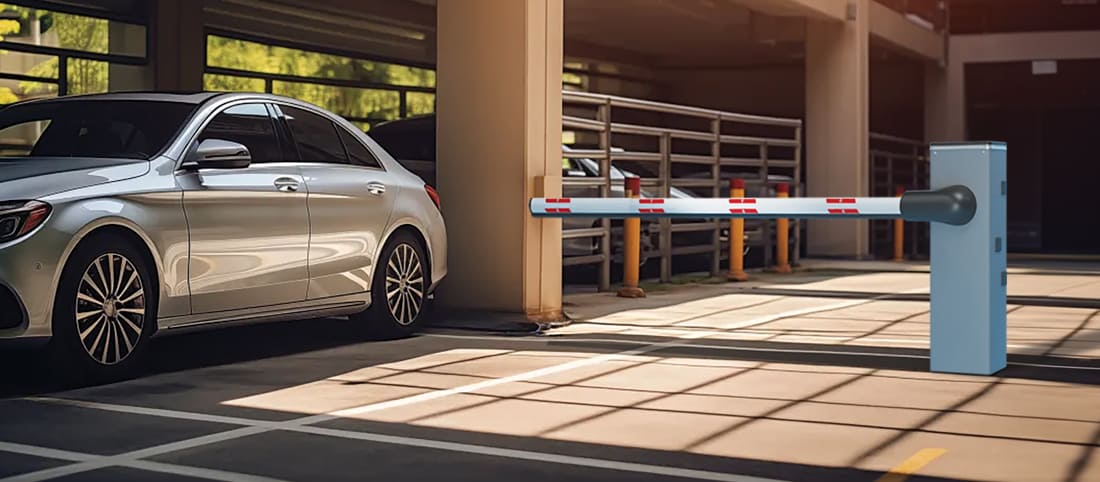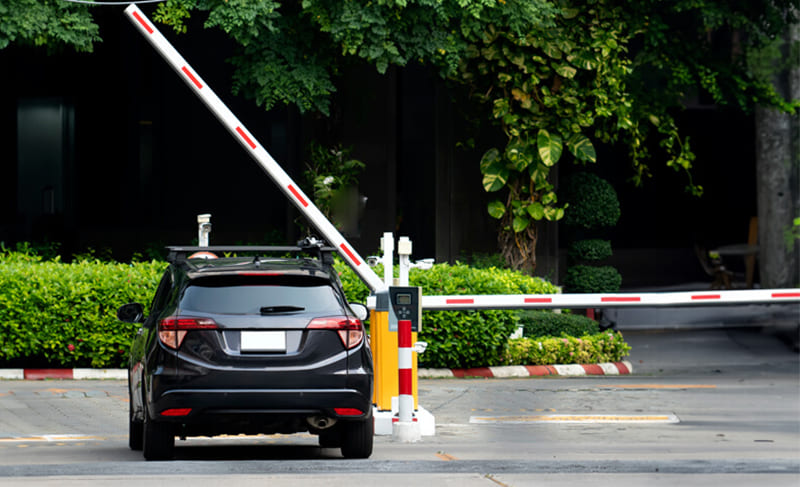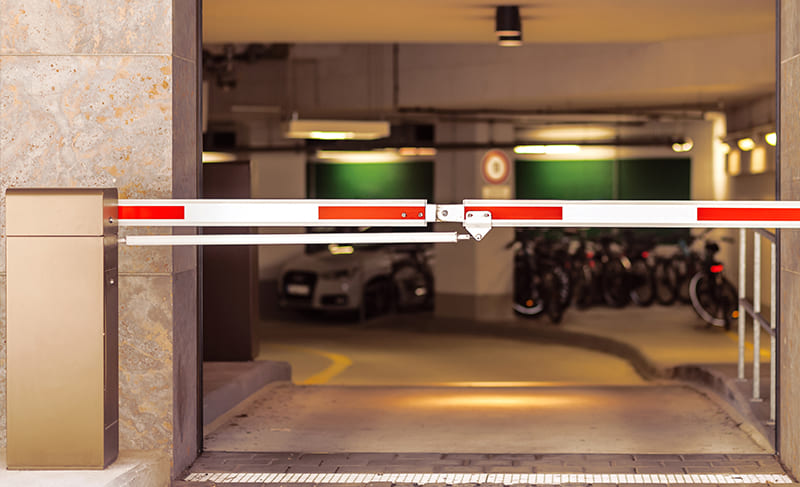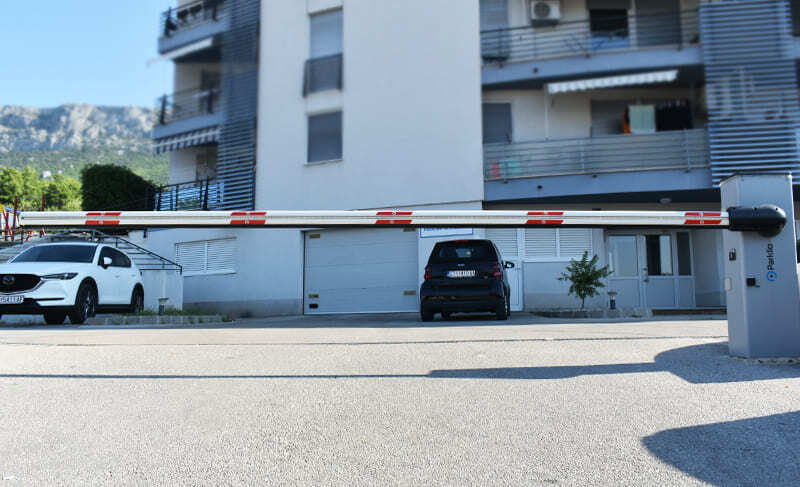Boom Barriers Explained: How Many Types Are There?

Thinking about buying a boom barrier but not sure where to start? With so many options out there, it can be overwhelming to choose the right one. This blog will walk you through the various types of boom barriers, including manual and automatic options, to help you understand their operating mechanisms and where to use them. By the end, you’ll have a clearer idea of which boom barrier is perfect for your requirements.
Table of contents:
Types of Manual Boom Barriers
Manual boom barriers are an economical choice for access control, requiring human intervention for operation. These barriers are typically used in areas with moderate traffic where the convenience of automatic barriers is not indispensable. There are different types of manual boom barriers that offer a range of operational mechanisms. These are the different types of manual boom barriers that you can choose from:
- Counterweight type relies on a counter-weight method to balance the boom, facilitating easy operation with minimal effort. By offsetting the weight of the barrier arm, this design ensures smooth and effortless movement, making it ideal for frequent use and minimizing operator fatigue.
- Crank Handle type features a crank mechanism for precise control over the arm’s movement. While this type requires the operator to manually turn the crank, which can be somewhat labor-intensive and time-consuming, it provides precise control over the barrier arms position.
- Lever Arm type operates with a simple push or pull mechanism. This requires physical strength to move the barrier, making it less suitable for frequent operation but effective in low-traffic areas where simplicity and durability are prioritized.
- Spring-loaded type incorporates a spring mechanism to assist in lifting the arm, reducing the effort needed to operate the barrier. The spring helps counterbalance the weight of the arm, making it easier to lift and lower, which is beneficial for frequent use without significant physical strain.
- Ratchet Mechanism type allows the arm to be locked at various positions, offering flexibility and better control. The ratchet system effectively secures the barrier at various points, although the process of adjusting and locking the arm manually can be quite demanding and requires extra effort.
- Lockable Manual type secures the arm in either the open or closed position, providing additional security. This type is easy to use but necessitates manual locking and unlocking, which involves extra effort but guarantees the barrier's secure positioning when needed.
Although manual boom barriers offer simplicity and cost-effectiveness, they are not practical in high-traffic environments. The ongoing need for manual operations can lead to inefficiencies and delays. Automatic boom barriers, on the other hand, provide a more efficient and user-friendly solution. Let’s take a closer look at the different types of automatic boom barriers and the benefits they offer.
Also read: Manual Parking Barriers: Are They Worth It?

Types of Automatic Boom barriers
Automatic boom barriers provide a sophisticated solution for managing access control in high-traffic areas, reducing the need for manual operation. These barriers come in several types, each utilizing different mechanisms to ensure efficient and reliable operation. Here are the different types of automatic boom barriers that you can choose from:
- Electro-mechanical Boom Barriers are powered by electric motors and mechanical components to control the barrier arm’s movement and ensure fast and consistent operation. These barriers offer precise control and are suitable for parking lots and toll booths with moderate traffic, where dependable performance is needed and routine maintenance is acceptable.
- Brushless Boom Barriers are a type of electro-mechanical barrier that utilizes brushless DC motors to control the movement of the barrier arm. These motors are more efficient and durable than traditional brushed motors, providing smoother and quieter operation. They require less maintenance due to the absence of brushes, which reduces wear and tear over time. Brushless boom barriers are ideal for high-traffic areas where reliability and low maintenance are crucial. They are commonly used in parking lots, toll booths, and commercial complexes.
- Hydraulic Boom Barriers use hydraulic fluid to power the movement of the barrier arm. Known for their durability and smooth performance, these barriers can handle extreme conditions making them ideal for heavy-duty applications such as industrial sites and high-security areas. Hydraulic barriers can withstand harsh weather and intense use, ensuring long-term reliability
- Pneumatic Boom Barriers operate using compressed air to move the barrier arm. These barriers are less common but offer distinct advantages, such as quiet and smooth operation. They are often used in environments where noise reduction is important, like hospitals and residential areas. The use of compressed air provides a gentle yet effective means of managing access control.
- Solar-powered Boom Barriers are designed to operate independently of traditional power sources, utilizing solar panels to generate electricity. These barriers are eco-friendly and cost-effective, ideal for remote locations or areas with limited access to electrical infrastructure. Solar-powered barriers are particularly useful in rural areas, nature reserves, and environmentally conscious developments, providing reliable access control while reducing energy costs.
Choosing the right type of automatic boom barrier depends on your specific requirements and site conditions. Understanding the benefits and applications of each type is crucial for making an informed choice. Next, we’ll discuss how to select the right boom barrier type for your specific needs.
Also read: A Close-Up Look: How do Boom Barriers Work?

Choose the right boom barrier type for your specific needs
Choosing the right boom barrier type for your specific needs requires careful consideration of several factors.
Start by determining how often the barrier will be used – occasionally, frequently, or continuously. This will help you select a barrier with the appropriate durability and operational capabilities. For instance, high-traffic areas may benefit from brushless or hydraulic barriers due to their durability and low maintenance requirements, while manual barriers can be a cost-effective choice for low-traffic areas.
Next, consider the power sources available at the installation site. Boom barriers can be powered by electricity, solar energy, or battery backup systems. Evaluate the reliability of the power source to ensure consistent operation. For remote locations or areas with limited electrical infrastructure, solar-powered barriers are an eco-friendly and cost-effective choice.
Integration with access control systems is another critical aspect. If your barrier needs to work with RFID readers, ticketing systems, or license plate recognition cameras, ensure the barrier you choose is compatible and easy to integrate. This will streamline operations and enhance security.
Finally, assess the maintenance needs. Look for a barrier that is easy to maintain, with accessible routine inspection, cleaning, and repair procedures. Additionally, ensure that good technical support is available to address any issues promptly. Choosing a barrier with low maintenance requirements and reliable support can save time and reduce operational disruptions.
Simplify Your Selection Process by Creating Your Own Decision Tree
To assist you in making an informed decision and help you navigate through the options, we’ve developed a decision tree example. By using this as a foundation, you can create your own decision tree, focusing on the criteria that matter most to you and your site’s specific needs.

Determine Traffic Volume:
- High Traffic:
◾Is noise reduction important?
Yes: Pneumatic Boom Barrier
No:
◾Do you prefer low maintenance?
Yes: Brushless Boom Barrier
No: Electro-mechanical Boom Barrier
- Moderate Traffic:
◾Do you need high durability for extreme conditions?
Yes: Hydraulic Boom Barrier
No: Electro-mechanical Boom Barrier
- Low Traffic:
◾Is the installation site remote with limited electrical infrastructure?
Yes: Solar-powered Boom Barrier
No:
◾Do you prefer manual or automatic operation?
Manual: Easy operation: Counterweight Manual Barrier
High security: Lockable Manual Barrier
Automatic: Electro-mechanical Boom Barrier
By building your own decision tree and incorporating it into your decision-making process, you ensure that you cover all of the crucial variables and pick the best boom barrier for your specific needs.

Key Takeaways
This blog has walked you through both manual and automatic boom barriers, highlighting their working mechanisms and benefits. Manual barriers, such as counterweight, crank handle, and lever arm types, offer simplicity and cost-effectiveness for low-traffic areas. Meanwhile, automatic barriers, including electro-mechanical, brushless, hydraulic, pneumatic, and solar-powered types, provide advanced features and efficiency for high-traffic zones. By understanding your specific needs—considering factors like usage frequency, power sources, and integration with access control systems—you can select the most suitable barrier for your site. Need more guidance? Contact us, and we'll help you find the perfect solution.

